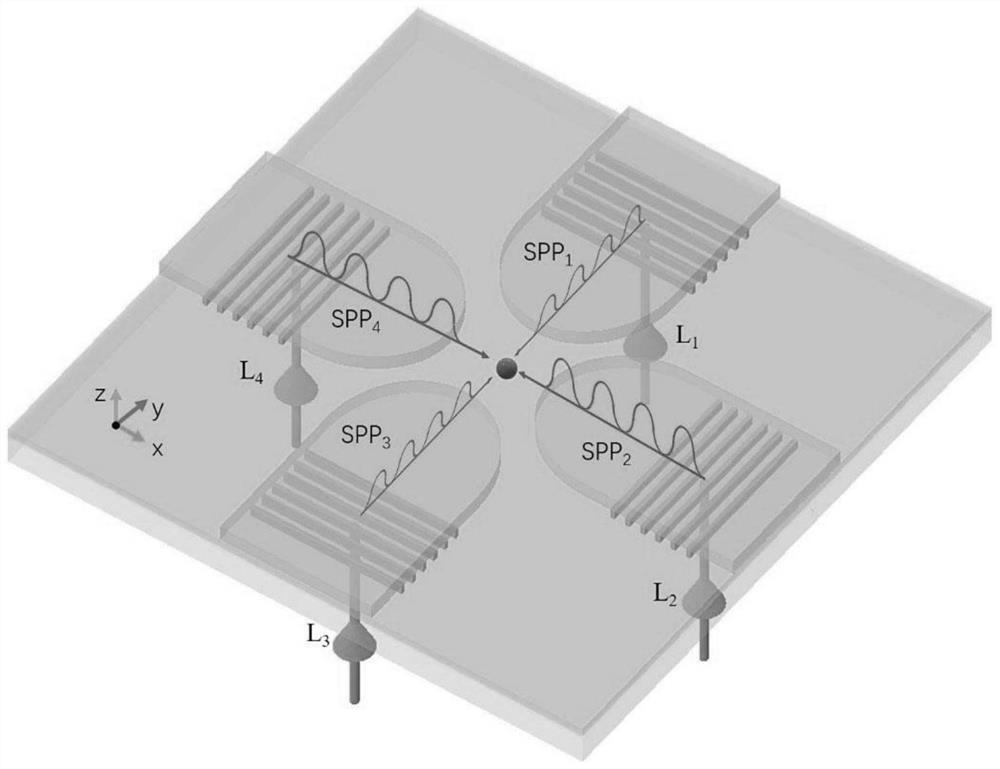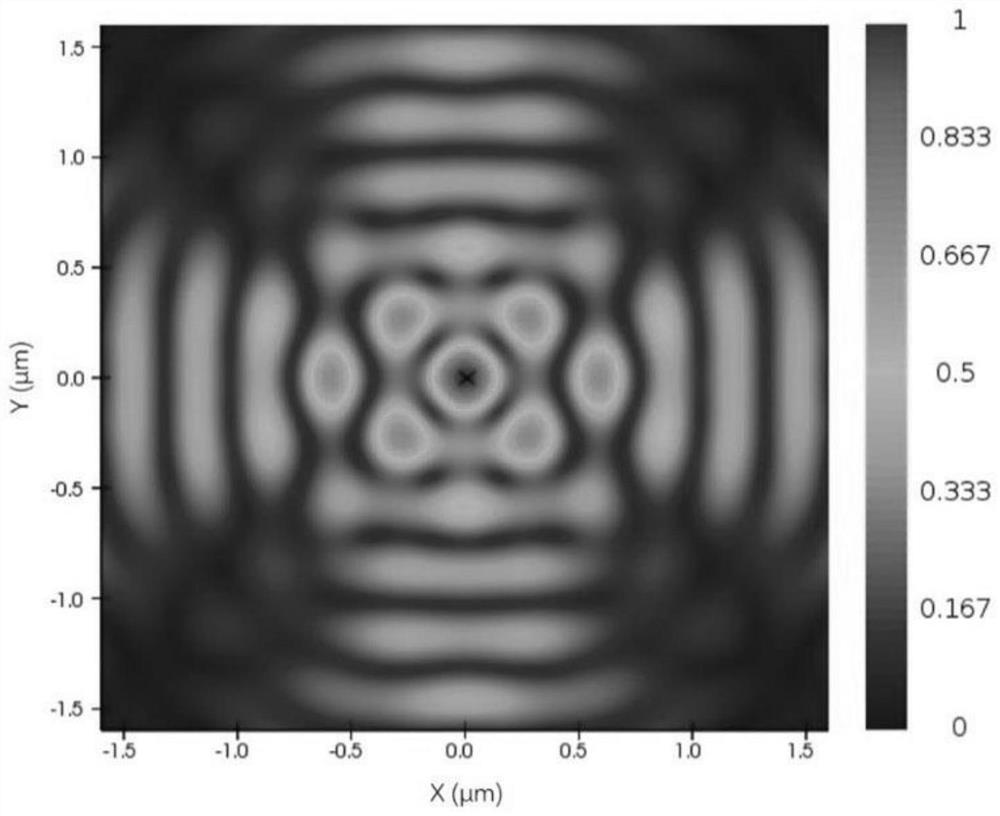Optical tweezers device based on surface plasmon lens
A surface plasmon and lens technology, applied in the field of integrated optics, can solve problems such as limited optical gradient force, increased radiation pressure, and inability to capture particles stably, achieving the effect of facilitating expansion and good integration
- Summary
- Abstract
- Description
- Claims
- Application Information
AI Technical Summary
Problems solved by technology
Method used
Image
Examples
Embodiment Construction
[0026] In order to make the objectives, technical solutions and advantages of the present invention clearer, the present invention will be described in detail below with reference to the accompanying drawings and specific embodiments.
[0027] like figure 1 As shown, the present invention discloses an optical tweezers device based on a surface plasmon lens, the optical tweezers device comprises a substrate, a metal layer, a grating and a semi-elliptical cylindrical lens arranged above the grating; the grating is etched on the metal layer; When the incident light is perpendicular to the grating from the substrate, the surface plasmons are excited between the metal layer and the semi-elliptical cylindrical lens; a pair of counter-propagating surface plasmons form interference fringes, so that the surface plasmon The center of the lens forms a surface plasmon enhancement spot.
[0028] That is, the optical tweezers device can form an interference field to trap and move nanoparti...
PUM
| Property | Measurement | Unit |
|---|---|---|
| Wavelength | aaaaa | aaaaa |
| Width | aaaaa | aaaaa |
Abstract
Description
Claims
Application Information
 Login to View More
Login to View More - R&D
- Intellectual Property
- Life Sciences
- Materials
- Tech Scout
- Unparalleled Data Quality
- Higher Quality Content
- 60% Fewer Hallucinations
Browse by: Latest US Patents, China's latest patents, Technical Efficacy Thesaurus, Application Domain, Technology Topic, Popular Technical Reports.
© 2025 PatSnap. All rights reserved.Legal|Privacy policy|Modern Slavery Act Transparency Statement|Sitemap|About US| Contact US: help@patsnap.com



